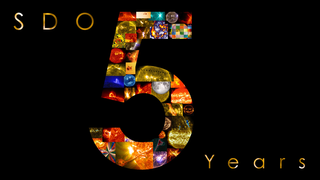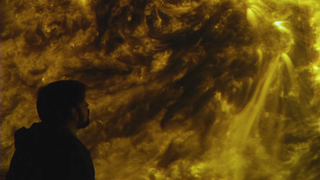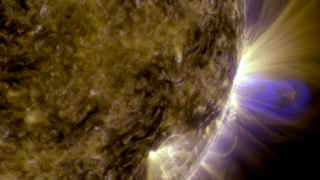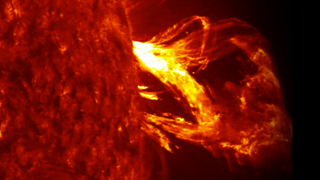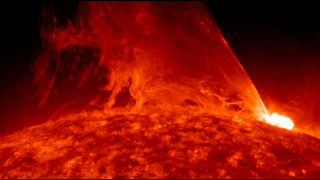SDO: Year 4
SDO captures images of the sun in 10 different wavelengths, each of which helps highlight a different temperature of solar material. Different temperatures can, in turn, show specific structures on the sun such as solar flares, which are giant explosions of light and x-rays, or coronal loops, which are streams of solar material traveling up and down looping magnetic field lines. The movie shows examples of both, as well as what's called prominence eruptions, when masses of solar material leap off the sun. The movie also shows a sunspot group on the solar surface. This sunspot, a magnetically strong and complex region appearing in mid-January 2014, was one of the largest in nine years.
Scientists study these images to better understand the complex electromagnetic system causing the constant movement on the sun, which can ultimately have an effect closer to Earth, too: Flares and another type of solar explosion called coronal mass ejections can sometimes disrupt technology in space. Moreover, studying our closest star is one way of learning about other stars in the galaxy. NASA's Goddard Space Flight Center in Greenbelt, Md. built, operates, and manages the SDO spacecraft for NASA's Science Mission Directorate in Washington, D.C.
SDO: Year One here.
SDO: Year 2 here.
SDO: Year 3 here.
Information about the individual clips used in this video is here.
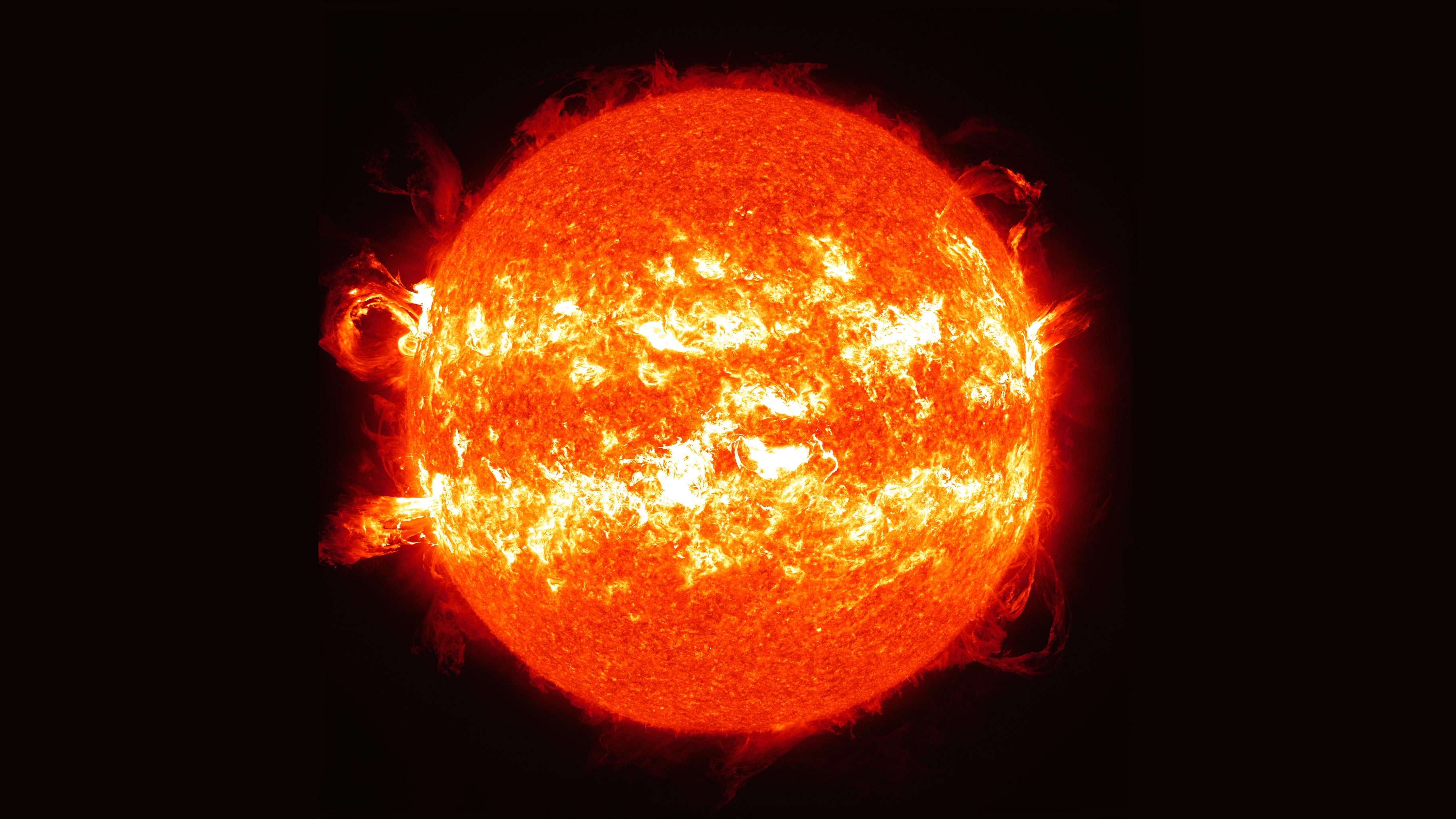
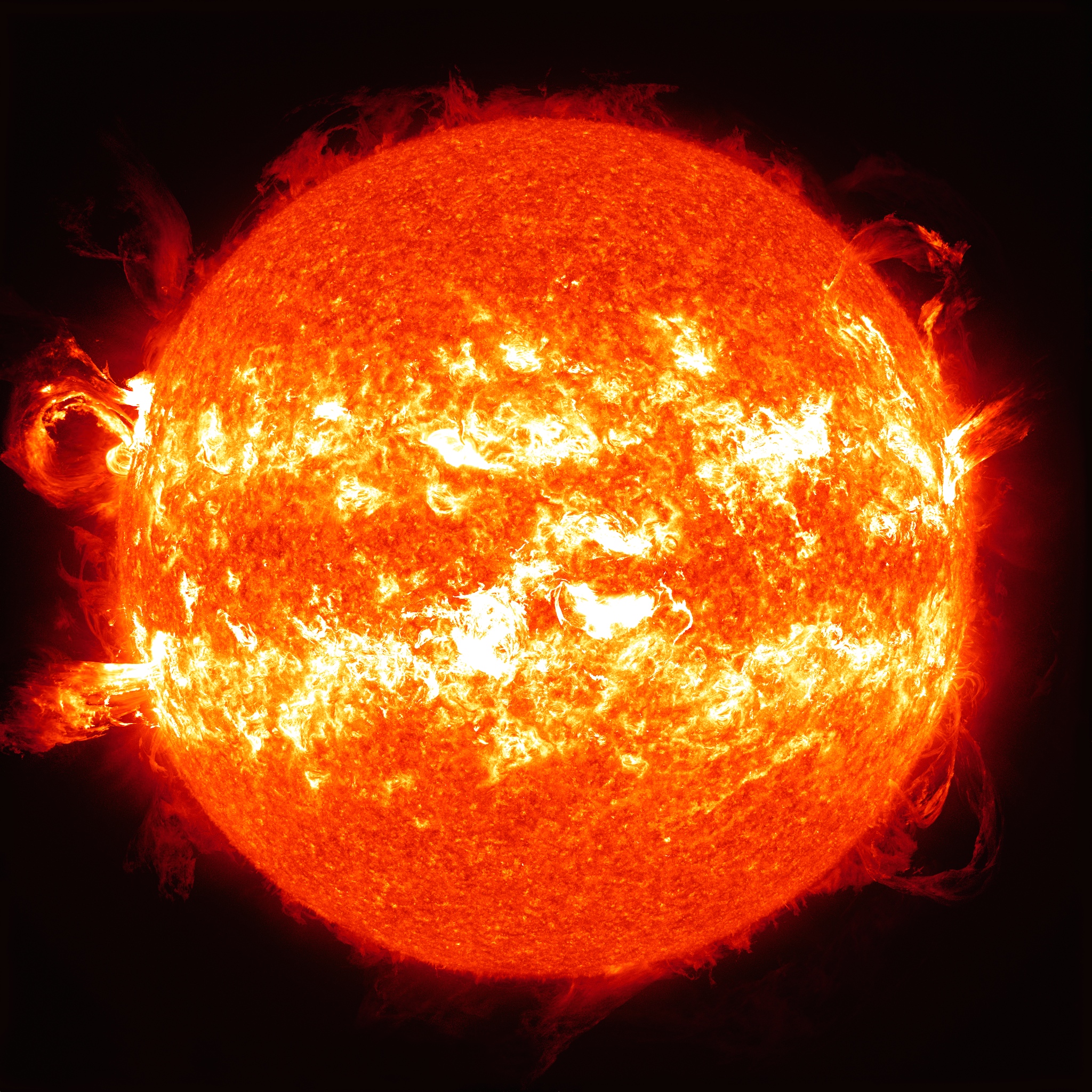
Related
For More Information
Credits
Scott Wiessinger (USRA): Animator
Scott Wiessinger (USRA): Video Editor
Scott Wiessinger (USRA): Producer
Genna Duberstein (USRA): Project Support
Karen Fox (ADNET Systems, Inc.): Writer
NASA's Goddard Space Flight Center/SDO
https://svs.gsfc.nasa.gov/11460
Mission:
SDO
Data Used:
SDO/HMI/Continuum also referred to as: SDO Continuum
SDO/AIA/304 Filter also referred to as: AIA 304
JOINT SCIENCE OPERATIONS CENTERSDO/AIA/193 Filter also referred to as: AIA 193
JOINT SCIENCE OPERATIONS CENTERSDO/AIA/171 Filter also referred to as: AIA 171
JOINT SCIENCE OPERATIONS CENTERSDO/AIA/131 Filter also referred to as: AIA 131
JOINT SCIENCE OPERATIONS CENTERThis item is part of these series:
SDO - Edited Features
Narrated Movies
Goddard TV Tape:
G2014-010 -- SDO: Year 4
Keywords:
SVS >> HDTV
GCMD >> Earth Science >> Sun-earth Interactions
GCMD >> Earth Science >> Sun-earth Interactions >> Solar Activity >> Solar Flares
GCMD >> Earth Science >> Sun-earth Interactions >> Solar Activity >> Solar Ultraviolet
GCMD >> Earth Science >> Sun-earth Interactions >> Solar Activity >> Sunspots
SVS >> SDO
SVS >> Solar Dynamics Observatory
SVS >> Heliophysics
SVS >> Corona
NASA Science >> Sun
GCMD >> Earth Science >> Sun-earth Interactions >> Solar Activity >> Coronal Mass Ejections
SVS >> Visible Light Imaging
SVS >> Extreme Ultraviolet Imaging
SVS >> EUV Imaging
GCMD keywords can be found on the Internet with the following citation: Olsen, L.M., G. Major, K. Shein, J. Scialdone, S. Ritz, T. Stevens, M. Morahan, A. Aleman, R. Vogel, S. Leicester, H. Weir, M. Meaux, S. Grebas, C.Solomon, M. Holland, T. Northcutt, R. A. Restrepo, R. Bilodeau, 2013. NASA/Global Change Master Directory (GCMD) Earth Science Keywords. Version 8.0.0.0.0
